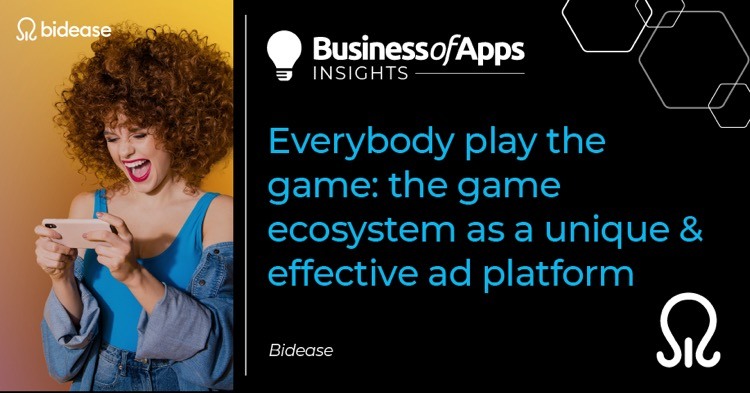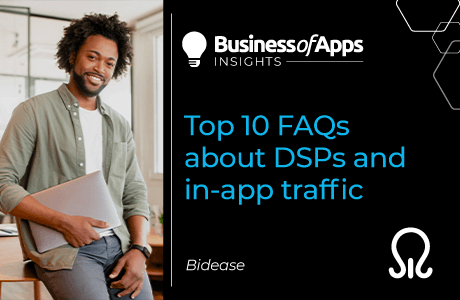One can hardly remember the time when video games used to be a rarity available to a select few. By the end of 2021, there will be an estimated 2,9 billion people worldwide who enjoy an occasional video game in their free time. Which basically means that one in every three people on the planet will (to a varying extent) be a gamer.
Doesn’t sound like the worst space for brand communication, does it? With this in mind, it comes as no surprise that more and more advertisers dive into the virtual world in pursuit of their existing and prospective consumers.
Admit it, you also have a couple of addictive games installed on your smartphone, don’t you? But can you even remember when and why you downloaded them?
One could not possibly argue that, tough as they may have been, the Covid-19 pandemic-related events of 2020 have indeed helped the gaming industry step up its growth and development. While we were all confined to our homes, even those who had previously shown no particular interest in mobile gaming ended up reaching out for their smartphones – the number of mobile game players increased by 12% over the past year (compared to 2019), reaching 2.5 billion people.
So, let us find out what makes the gaming industry so attractive for advertisers and so crucial to their marketing strategies.
Good vibes
According to gamers, such kind of entertainment helps them relieve stress, serves as an interesting and captivating pastime and even lets them “socialize” playing with friends or relatives. Older players say it is mentally stimulating and helps them train their memory.
In all these cases one thing is for sure – these people truly enjoy the gaming process, be it a multiplayer shooter, a simplistic hyper casual game or a sudoku. Whatever their individual genre preferences, all players feel uplifted.
But what’s in it for advertisers? That’s right, an uplifted prospective customer is more likely to become a regular one!
To game all ages yield surrender
Everyone is fascinated by games, no matter the age. Gen-X, millennials, zoomers, even boomers can all find a genre to their liking. There are no noticeable discrepancies in gender composition of those age groups, but the preferences clearly differ.
Men mostly tend to spend time on action games, whereas women prefer playing casual ones. Older people are typically more into card games.
Within the vast gaming ecosystem, pretty much any product from pretty much any vertical can find its customer. Sounds amazing, doesn’t it?
Time for a MarTech health check
Is your MarTech stack fueling growth or wasting budget? Spot the issues and fix them fast with this free guide from the experts at ConsultMyApp.
Download nowLoyalty fair
On the one hand, the growing interest in mobile games leads to a wider range of offerings, but on the other, an extensive choice of games makes potential players more picky.
These days, the game does not simply have to be there, it must also have stunning visuals, engaging storyline, pleasant gameplay, interesting music, it must even be somewhat useful in the end. Not to mention being free!
However, game development is well-known to require enormous amounts of time and money. That is why developers are more and more actively introducing the hybrid monetization model, which makes the virtual world a dream place for performance ads.
Obviously, everybody profits from this: the developers’ work pays off, the gamers can access different in-game perks and play more effectively without having to pay extra, while the brands can interact with their potential audience in an environment that is comfortable for the latter.
So when was it that gamers stopped perceiving in-game ads as merely irritating and bothersome? Right you are, it also happened back in 2020, when people started spending an average of 5-6 hours a week playing games.
It would therefore be a big mistake to assume that mobile games are but a nice option for promoting other gaming projects. The key here is profound study of your potential audience.
Mobile players are very loyal guys, and even Apple’s scary pop-up window does not stop them. About a half of all gamers grant their permission for Ad Tracking, as vividly shown in the latest AppsFlyer report.
What’s in it for brands? Well, an enthusiastic player who now fully understands the value of advertising is available to advertisers for 6 hours a week – how awesome is that?
Level-up
What about media ads? Things are a little more complicated here, but not too much.
This format is best suited for video games with complex mechanics, including hardcore games, shooters etc., preferably with a long game session.
Thanks to the high specs of modern smartphones, popular titles by large brands are, to their fans’ delight, long available on mobile devices as well. However, having been initially created for PC and consoles, they have a different monetization model. Don’t you think it would be rather weird for an ad to pop up right in the middle of a decisive battle or vitally important pursuit?
That is why the best solution here is product placement – ads neatly integrated into the game environment and not interrupting the user session in any way. It is exactly what it sounds like: in the modern virtual world you can easily bump into the ads of your favorite real-world brands.
The benefits of media ads in video games are that they remind the player of a brand without being pushy, increase brand recognition and coverage as well as boost target audience loyalty.
There are also a number of downsides: it is still challenging to ascertain the exact performance of such placements or evaluate consumer feedback. On a side note, it has pretty much always been the case with media, and marketers have always managed to find sneaky alternative ways of measuring the necessary metrics.
In the modern world, it is vital to stay visible to the customer and be within the scope of their interests. This ad placement format can guarantee exclusive visibility.
Right moment
Not only does the gaming process itself naturally put the prospective (or current) customer into a better mood – the ads are shown at exactly the right time.
Just think about it: a person is done with all the important business and is sitting somewhere comfortably, playing on their phone. It is, of course, possible that they are playing while on the subway or on their way to work, but at any rate they have the time for it, and this is the right time for an ad.
For an advertiser, direct presence in the gameplay means a higher chance that the users will pay due attention to the advertising message.
Conclusion: the game is just beginning
Gaming industry has been showing steady growth and expansion for quite some time by now. Together with AdTech companies, it can now offer advertisers reasonably profound product and service promotion.
The number of players worldwide is growing by the year, as is the time they spend on their favorite pastime.
For many advertisers, these factors are what makes the gaming ecosystem an alluring communication channel with its own playing audience. So why not avail of this outstanding opportunity?











